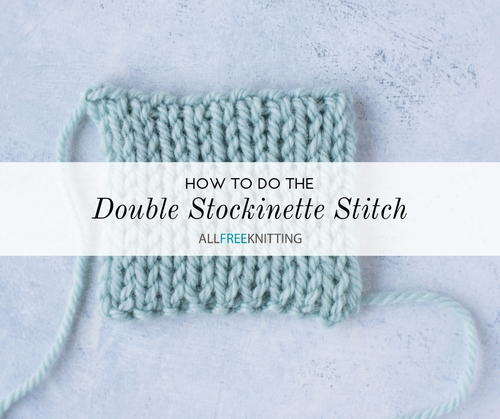
There are tons of great DIY projects that you can do this summer, including fun and unique crafts for the pool. Crafts can bring joy to your summer party and fill in the boredom. Here are some DIY ideas that will delight your guests. These projects are also an excellent way to save money and get something handmade for your home. You can shop online for materials or find a variety of materials in your local home improvement store.
DIY flamingo ring toss game
For a backyard ring toss game, gather up some plastic flamingos with stakes. You can purchase them in various sizes and colors at party supply shops. Plastic rings can be used, but they are more easy to throw and spray paint. If you don't have a yard to use, you can also buy rope rings and spray paint them. They can be painted any color you want and used in the game.
DIY mason jar candle holders
If you'd like to make a unique candle holder that will be perfect for the summer months, you can always make your own. It's easy to make a candle you can carry with you everywhere you go. You will need a mason container. Next, you will need some candle wax, scissors, and baking parchment. You will need either a cutting knife or a mat to cut the design. You can cut the paper with your craft knife and then peel it off easily.

DIY macrame table runner
Here are some ideas to help you make a macrame table runners for summer. First, cut six to eight inches of macrame cable that is 6 to 8 inches longer than the length the table. Tape will secure the ends to prevent them from unravelling or fraying. You can also make little cylinders with washi tape at the ends by using it. After you secure the tape, you are ready to tie knots on the fringe.
DIY tin lanterns
You can create DIY tin lanterns for summer with your kids. First, gather some hole shapes and an empty tincan. Then, trace the template on the can using a pencil or marker. The paper should be cut from the can easily without it being too thick. You can also use Goo Gone to clean the tin can before you start carving the holes.
DIY pendants
DIY Pendants for Summer are a great way to express yourself with your accessories. These handmade necklaces cost only a few dollars and can be created in a very short time. These handmade accessories will suit any style, from bohemian to casual. They are perfect for the beach. You can make your own pendants for the summer if time is tight.
DIY lampshades
You can make a DIY lampshade from an old stained glass lamp. A basic template and some fabric are all you need to make a lamp shade. Wrap the fabric or paper around the base of the lamp. You can make the lamp more interesting by adding decorative embellishments. You can make your lampshade look like concrete or marble. The shade's rim can be covered with double-folded biastap.

DIY leaf garland
For summer decorating, a DIY leaf garland makes a great choice. The only materials required to create this garland are a few. You'll need paper sheets in a variety of colors, scissors, glue, and pencil. It will make your space feel tropical and impress guests. You can print the instructions online or from a book about DIY leaf garland. These steps will help you make this garland.
FAQ
What's a hobby?
Hobby for children is anything they enjoy doing outside of work. They might like to draw pictures, build things, paint, write stories, play with toys, read books, watch TV, listen to music, play computer games, ride bikes, skateboard, swim, climb trees, run around outside, play football, basketball, volleyball, rugby, cricket, baseball, soccer, hockey, dodgeball, rounders, tag, hide and seek, hopscotch, marbles, jump rope, hopscotch and many others.
Many parents worry that their kids will get into trouble when they're free to do what they want. It is not true. Your child won't get in trouble if they are safe and don't do any harm to anyone.
It is important that people remember that simply because they love doing something does not mean they will always do it. For example, if they love drawing pictures but they hate writing, then they may decide to draw pictures instead of writing.
There are many different hobbies, so it is up to you which one you love the most.
How do I start my new hobby?
To start a new hobby, you must first decide what type of activity you would like to do.
Once you've chosen your subject, you need to be passionate about it.
Understanding why you are interested in a hobby is important. It will provide you with direction and purpose.
Once you have determined what hobby you wish to pursue, you can plan your next steps.
Think about what equipment you'll need to purchase.
Consider whether you are required to attend classes and seminars.
You should ensure that you have enough space to enjoy your hobby.
It might also be worth considering joining a group or club. These groups usually offer support and advice.
The last thing you should do is think about how much money it would cost to pursue your hobby.
Where can I get free resources to learn more?
There are tons of websites devoted to helping people discover new hobbies.
Here are some of the favorites:
www.trythisathome.com - This site provides a list of over 100 different hobbies. You can also find information about how to start each hobby.
www.hobbyfinders.org offers a huge database with thousands of activities. You can search for your interests, skills, location, and many other criteria.
www.indiebazaar.co.uk - IndieBazaar is an online marketplace designed specifically for independent artists and musicians. You will find hundreds of products that range from artwork to music gear on the site.
www.pinterest.com/explore/hobbies - Pinterest is a social media network that lets users "pin" images they find interesting onto their boards. Users can use boards to organize their favorite things into specific categories.
www.reddit.com/r/Hobbies Reddit allows users to share links to articles, videos and other content on their social media platforms. Voting allows users to vote for the most valuable posts.
Why do we need hobbies?
Hobbies play an integral part in our lives. It allows us to unwind and recharge, think creatively, exercise, socialize, have fun, and allow us to enjoy life. They also provide us with opportunities for learning new skills and developing valuable life-long interests.
Hobbies give us meaning and purpose in life.
These can often be a great way to get some extra time while you have nothing else.
They're also fun!
If you don’t have the time to do a hobby, you likely don’t have any other hobbies.
Take a look at the many options that are available to you. If you don't have a hobby yet, then maybe you should start one today!
What are good hobbies for seniors?
Senior citizens should have fun activities that they enjoy doing. Senior citizens should be active and participate in other activities.
They might be interested in joining clubs that offer similar interests. This will make them less lonely as they age.
Seniors must also be on the cutting edge of new trends. They could be interested in fashion, art, music and literature.
Statistics
- This 100% accurate personality-analyzing hobby quiz discovers your passion based on your characteristics. (quizexpo.com)
- Much of this decline reflects the fact that teens are less likely to work today than in the past; among employed teens, the amount of time spent working is not much different now than it was around 2005. (pewresearch.org)
- The intensity of the dialogue partners' bond at the end of the forty-five-minute vulnerability interaction was rated as closer than the closest relationship in the lives of 30 percent of similar students. (time.com)
- A new survey by Pew Research Center of teens ages 13 to 17 finds that 36% of girls feel tense or nervous about their day every day; 23% of boys say the same. (pewresearch.org)
- I am 100% biologically a woman (discover.hubpages.com)
External Links
How To
How to begin gardening
Gardening is one among the oldest forms. It requires patience, persistence and determination. It is important to choose the right location for your garden. It could be large land, or just your backyard. Next, you will need to decide which type of plants are best for you. Do you prefer flowers over vegetables? Some people enjoy growing herbs while others love raising livestock such as rabbits. Before you decide on what type of crops to plant you need to take into consideration how much space you have. If you live somewhere that has cold winters, it might be a good idea to grow berries or fruits.
After you have decided what you want to plant, it is important that you prepare the soil. Soil is essential in determining whether your plants will thrive or fail. The soil should be rich in organic matter to provide nutrients for your plants' roots. Organic matter is made up of leaves, twigs grass clippings, manure and compost. Once your soil is prepared, it's time to add nutrients. You will need different amounts of nutrients depending on which type of plants are being grown. To determine these values, you can use a fertilizer calculator online. There are many fertilizers on the market, so ensure you understand what you are buying.
After you have prepared your soil, and added the correct nutrients, you will need to wait until your seed germinates. The process can take between 2 and 3 months depending on how hot or cold it is in your region. After your seeds sprout, it is important to water them frequently. You can endanger your plants if you water them too often or too little. Ensure you give your plants enough water at regular intervals and avoid overwatering. Overwatering can result in root rot, fungal diseases, and even death. It is important to remember that plants will need less water in summer than in winter when watering them. Remember that some plants require drying out after being watered. Tomatoes for instance need to remain slightly moist, but not wet. They are not happy to be in soggy soil. After plants finish flowering, they need to go dormant. Dormancy is when plants stop producing new growth and begin storing energy for the next season's harvest. During dormancy, the plant stops sending signals to its roots telling them to produce food. Plants continue to store energy throughout this period. If temperatures fall below freezing or the plants are not getting enough sunlight, they will die.
Urban areas can limit your choices for plants. Concrete sidewalks, roads and buildings are common in urban areas. They block sunlight from reaching the ground. Concrete absorbs light and prevents soil below from getting sufficient sun exposure. This is why many plants cannot thrive in cities. Fortunately, there are still many plants that can thrive in an urban environment. Many trees, shrubs, perennials, and other plants can adapt to urban life. Many annuals can also grow indoors in pots. You can have fresh greenery all year round with container gardens.
Now that you have decided where to place your garden, chosen what you will grow, and prepared your soil, you are ready to plant!